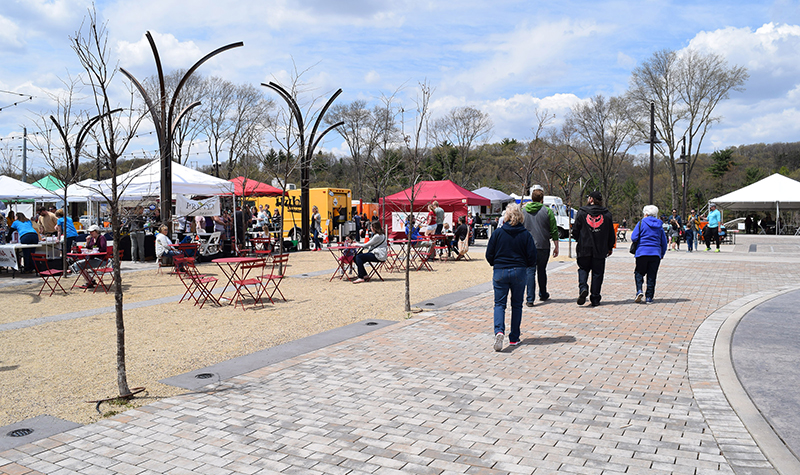Permeable Pavement, Pavers Can Be Part of Stormwater Management Solution
 Here’s an intriguing thought: Sometimes the best pavement surface is one that isn’t dense and solid.
Here’s an intriguing thought: Sometimes the best pavement surface is one that isn’t dense and solid.
Permeable pavement – also called pervious paving – allows runoff and rainfall to infiltrate through the surface to the soil below. That can be a real asset for communities searching for ways to more effectively move water off streets, sidewalks, and parking lots during a storm event or snow melt.
Some forms of permeable pavement are old technology:
- Ancient Roman roads still visible today provide an example: carefully set bricks. In the Netherlands, old roads were made of stone or clay pavers. In the 1940s the Dutch began using concrete pavers, still called Holland stones. Pavers of various types are popular in the United States today, especially in areas that benefit from the aesthetic appeal of a patterned surface.
- Europeans started using pervious concrete in the 1800s. It’s a special type of concrete made using large aggregates with little or no fine aggregates. Modifications to this traditional “recipe” have produced a pervious concrete that can be used in colder climates.
Some forms of permeable pavement reflect modern technological advances:
- Permeable asphalt is produced much like conventional asphalt concrete, except that small aggregates are not included in the mixture. Permeable asphalt has open voids that allow water to pass through the surface. Some projects using permeable asphalt will have a subsurface reservoir to hold the water that passes through the surface. Other projects will use a form of permeable asphalt that allows water to infiltrate only the top inch or so of the pavement; the water is then drained to the side of the roadway.
- Some permeable paver systems, like those pictured above at River Prairie in Altoona, Wisconsin, use standard pavers with wider gaps and a specifically engineered subgrade to allow drainage between and under the paver stones into the gravel below.
- Grass pavers can be used in areas that receive less traffic. Plastic grid systems are installed on a base of open-graded or engineered stone. The surface layer is compacted gravel or topsoil seeded with grass. Grass pavers help stabilize the ground while allowing water to pass through the surface.
- Elastomerically bound recycled glass permeable pavement is made by bonding processed glass with resins, pigments, granite, and binding agents. Resin-bound paving is made by coating aggregate particles with clear resin so the particles adhere to each other but leave voids for water to pass through.
Using permeable pavement or pavers can provide many benefits:
- Water drains into the soil, reducing the impact to stormwater management systems.
- They can be used in developed areas that have little or no room for other means of handling excess water.
- The infiltration process provides a chance for some pollutants to be removed before rainfall or snow melt enters surface or groundwaters.
Using permeable pavement or pavers also can present challenges:
- Surfaces may require some maintenance, as grit can block the open pores. Vacuuming helps maintain surface permeability.
- In cold regions, materials must be designed to accommodate the freeze-thaw cycle.
- Permeable pavement may not be appropriate in areas of extreme slope.
- Grass pavers will require occasional reseeding. Some people may object to the look of the pavers when the grass is dormant or sparse.
Permeable pavement costs more than traditional asphalt paving, but the expense might be offset by its ability to help make the most of existing stormwater management installations – especially in developed areas with little open space. It is, in effect, doing two jobs: providing a solid surface for vehicles and offering an open surface for drainage.
Is permeable pavement right for your project? Contact any of our municipal service leads for answers to your pavement questions.

Post a comment: